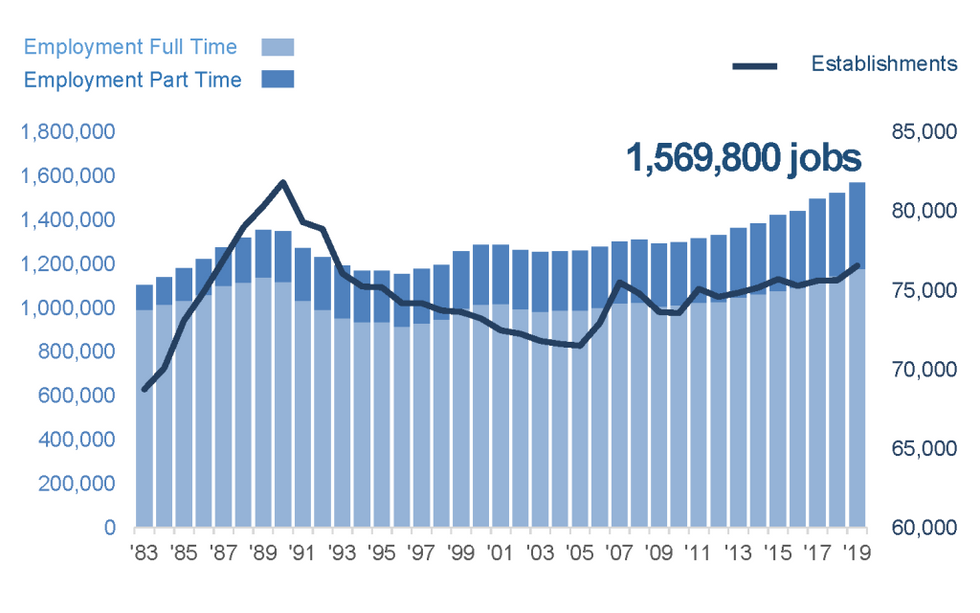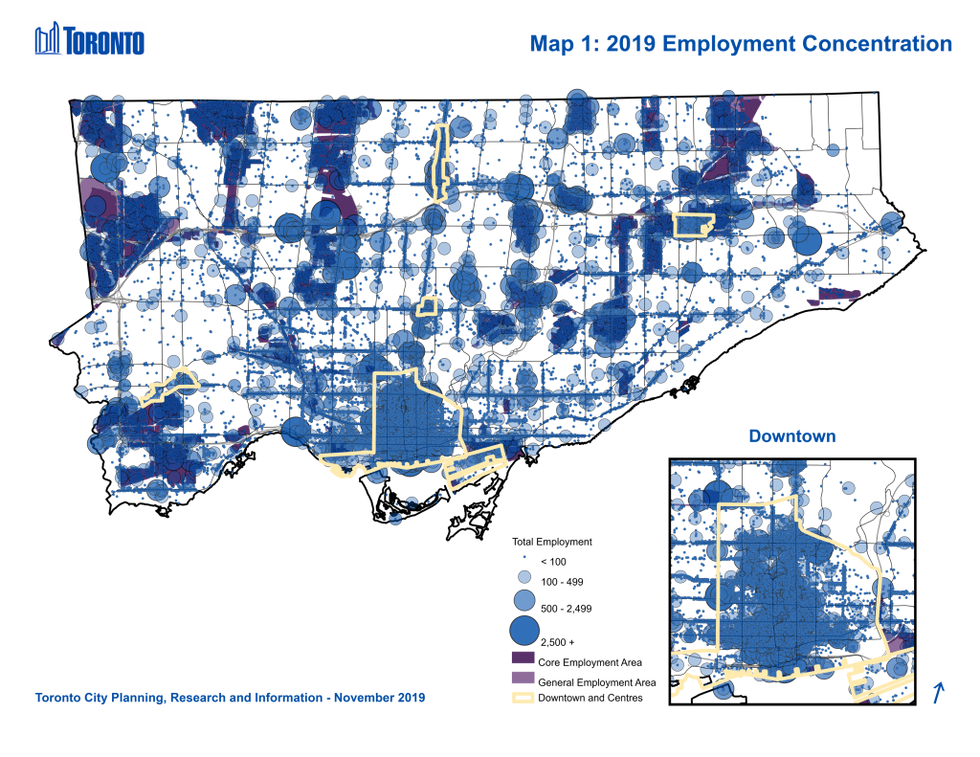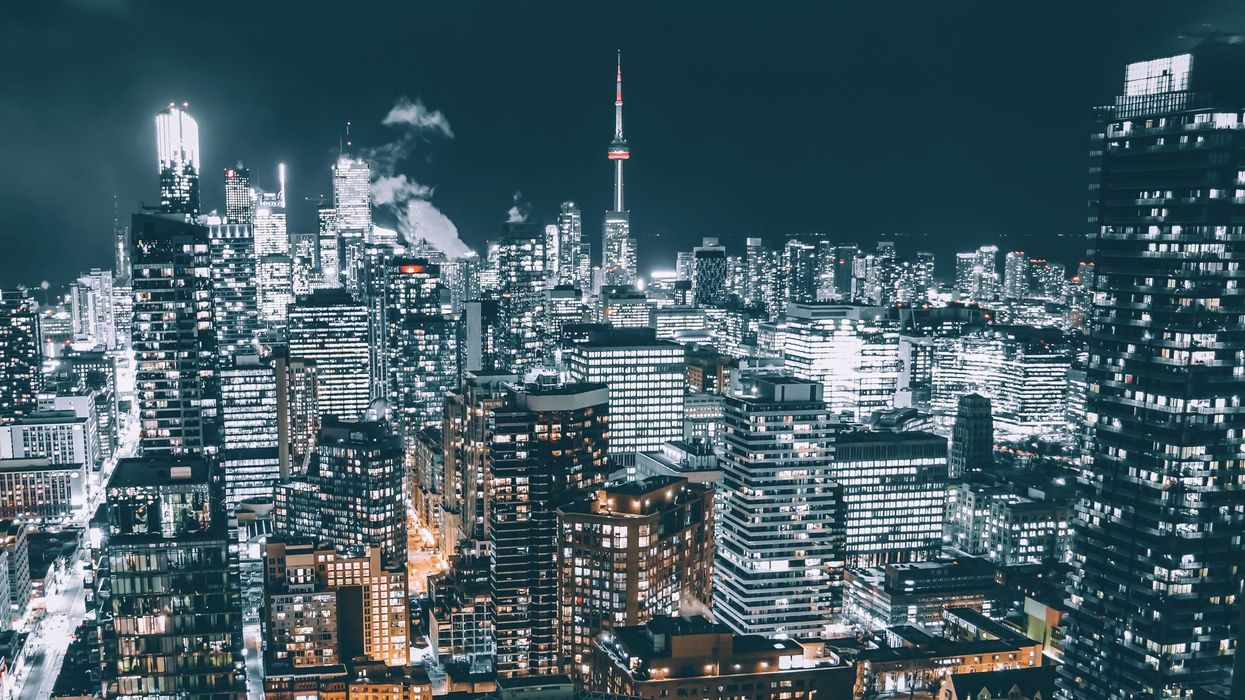According to the recently released 2019 Toronto Employment Survey, the city has reached over 1.5 million jobs, with over a million of them being full-time.
Total employment in Toronto grew by 3.1% from 2018, marking an increase of 46,920 jobs over the course of the year. Office employment remains the largest sector in Toronto — nearly one out of every two jobs fall within this sector.

Perhaps no surprise, but Toronto’s tech sector continues to thrive. Firms secured 60,408 tech jobs in 2019, marking a nearly 85% increase from 2014, and a 16.6% increase from 2018. Both employment and the total number of tech establishments nearly doubled over the past five years.
This announcement was made from Mayor John Tory, who reiterated that “Toronto is a tech centre that offers a diversity of education and culture that builds successful organizations,” during his public address. And while strength is seen, Tory stressed the need for better access for all Torontonians, including those in more remote areas.
In 2019, tech establishments represented four per cent of all jobs in the city, seeing strong numbers in areas such as computer systems design (comprising 58.2% of total tech employment) and telecom carriers (comprising 16.2% of total tech employment). However, telecom carriers also lost 783 jobs in the last year, which has made way for software publishers and the rise of video game design jobs. Video game design grew its workforce by 30.1%, now accounting for three per cent of total employment in Toronto.
In terms of locational clusters, the Toronto Employment Survey identifies key areas of the city that continue to encourage and harness tech growth. One falls with the South Employment Monitoring Area (EMA), located south of Queen Street, as well as in Liberty Village. The South EMA comprises 63.4% of total tech employment in Toronto.
The other significant clusters are seen within Toronto’s Downtown (49.2% of 2019 tech employment) and Centres (12.0% of 2019 tech employment), but there’s also an increasing amount of tech establishments that cluster close to subway lines and major highways, too. Strong labour and knowledge in numbers continues to drive these clusters, and areas pertinent to this growth remain within auto, finance, information and communication technologies (ICT), as well as the life sciences. These areas are increasingly dependent on new technologies.
3,810 new Toronto business establishments opened in 2019, with 56.8 per cent of these businesses opening within Employment Areas, Downtown, or in the Centres, according to the survey.
Key to also mention are some of the concerns addressed from those surveyed. Housing affordability and daycare options, in particular within Liberty Village, were expressed concerns.
As the report notes: “While Toronto is affordable in comparison to some of the international tech centres, a concern was raised that as employees start families they may have to move further away, potentially resulting in higher staff turnover.”
Participants also expressed frustration over finding affordable space, especially to house smaller firms that required 1,000 to 2,000 square feet of space, and that landlords were “reluctant to rent to them if they were not venture-capital funded.”
Also, being that the bulk of commercial leases require tenure of five to 10 years, the survey found that many of those smaller firms were currently sub-leasing their space or “sub-lessors of space.”

How the survey works
Over the summer, surveyors ventured to over 75,560 locations to visit each business establishment within the city of Toronto. The number of employees working at each location, plus the type of work being done, are taken into account.
Key definitions and phrasing to remember in tech jobs
“Soft” technology: Computer systems design, web hosting, data processing
“Hard” technology: Manufacturing, wholesaling of tech products such as computers
Tech establishments: An ecosystem that includes clients, investors, financial institutions and the labour force, as well as support organizations such as academic institutions and research facilities.



















